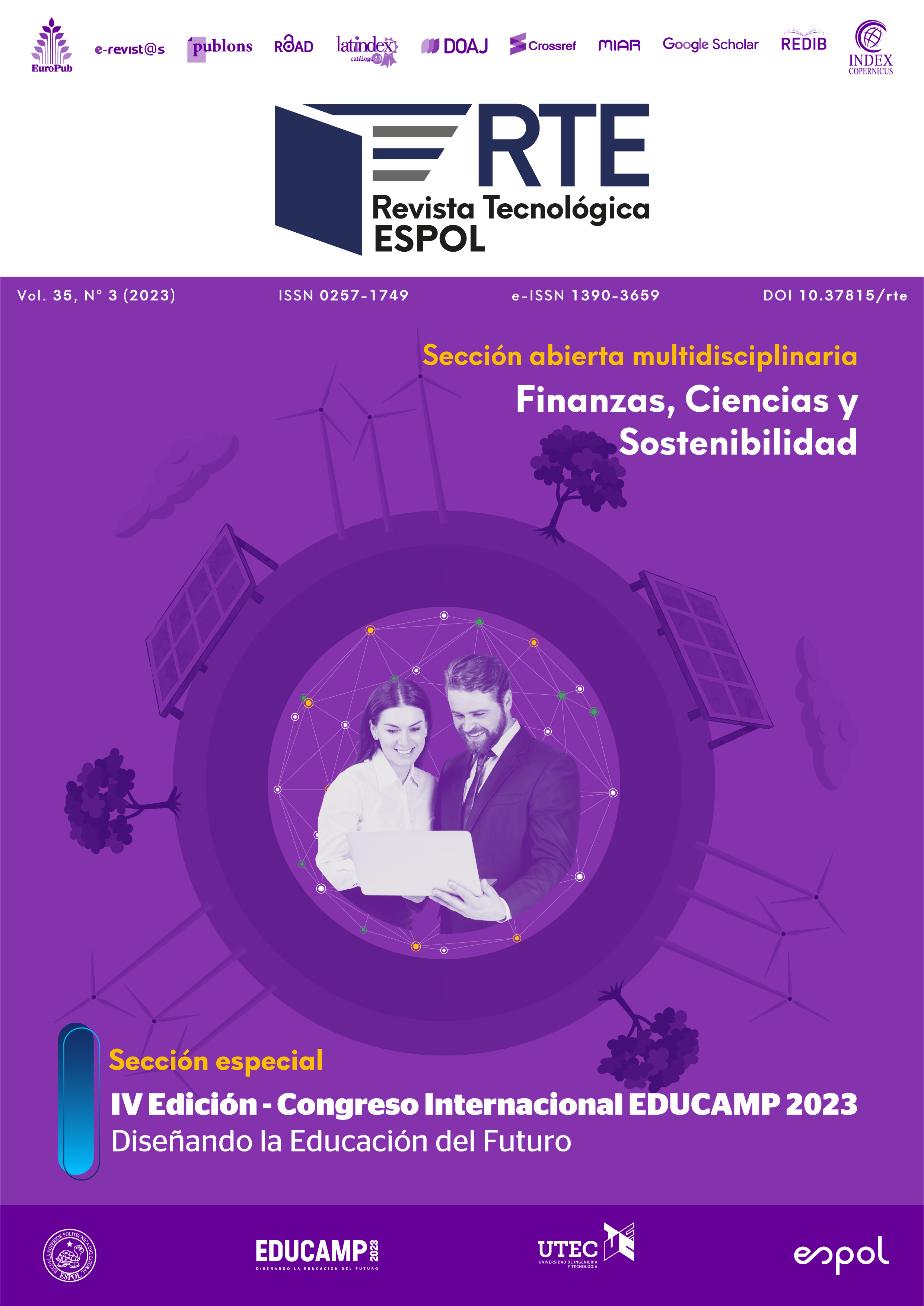The adequate disinfection of work environments in educational institutions that remained closed for more than a year due to the confinement caused by Covid-19 was essential for the progressive return of routine activities. Studies have shown that when areas remain closed for long periods, there is a risk that the bacteria and fungi contained inside will increase to levels that can be dangerous to health. This study was developed at the Faculty of Maritime Engineering and Marine Sciences (FIMCM) facilities of the Escuela Superior Politécnica del Litoral (ESPOL). Its objective was to determine the efficiency of chlorine dioxide in the disinfection of the environment and contact surfaces in work areas that had remained closed for more than a year during the pandemic. The disinfection of the environment was evaluated by culture in an agar plate, for the recovery of bacteria and fungi, before and after using chlorine dioxide (20ppm). On the other hand, disinfection on surfaces was evaluated using a luminometer before and after using chlorine dioxide (20ppm). It was confirmed that the presence of fungi in the environment decreased by 73%, while microorganisms in the contact surfaces decreased between 92% to 99%. This work was presented as a report to ESPOL authorities as part of what was done before returning to the offices and other locations of the FIMCM; however, it was not written as a scientific paper format, nor it was published in scientific research journals.

This work is licensed under a Creative Commons Attribution-NonCommercial 4.0 International License.
References
Aly-Kullai K., Wittmann M., Noszticzius Z. and Rosivall L. (2020). Can chlorine dioxide prevent the spreading of coronavirus or other viral infections? Medical hypotheses. Physiology International 107 (2020) 1, 1–11. DOI: 10.1556/2060.2020.00015.
Evaluación del riesgo de la transmisión de SARS-CoV-2 mediante bioaerosoles. Medidas de prevención y recomendaciones. Ministerio de Sanidad, Dirección General de Salud Pública, España. 2020 nov.
Hatanaka, N., Xu, B., Yasugi,M., Morino, H., Tagishi,H., Miura, T., Shibata, T., Yamasaki, S. (2021). Chlorine dioxide is a more potent antiviral agent against SARS-CoV-2 than sodium hypochlorite. Journal of Hospital Infection 118. 20-26.
Liu, X.J., 2003. Persistence of SARS-CoV in environment beyond expectation. China’s Science and Technology Daily. 4 June, 2.
Mendell, M. J., Mirer, A. G., Cheung, K., Tong, M., & Douwes, J. (2011). Respiratory and allergic health effects of dampness, mold, and dampness-related agents: a review of the epidemiologic evidence. Environmental health perspectives, 119(6), 748-756.
Milton. A Rosetta Stone for Understanding Infectious Drops and Aerosols. Journal of the Pediatric Infectious Diseases Society [Internet]. 17 de septiembre de 2020 [citado 5 de octubre de 2020];9. Disponible en: https://pubmed.ncbi.nlm.nih.gov/32706376.
Miura, T., & Shibata, T. (2010). Antiviral effect of chlorine dioxide against influenza virus and its application for infection control. Open Antimicrob Agents J, 2, pp. 71-78.
Morino, H., Fukuda, T., Miura, T., Shibata, T. (2011) Effect of low-concentration chlorine dioxide gas against bacteria and viruses on a glass surface in wet environments. Letters in Applied Microbiology ISSN 0266-8254.
Montaño L., Flores-Soto E. (2020). COVID-19 y su asociación con los inhibidores de la enzima convertidora de angiotensina y los antagonistas de los receptores para angiotensina II. Departamento de Farmacología. Facultad de Medicina. Universidad Nacional Autónoma de México. Ciudad de México, México.
Ogata N. Inactivation of influenza virus haemagglutinin by chlorine dioxide: oxidation of the conserved tryptophan 153 residue in the receptor-binding site. J Gen Virol 2012; 93: 2558–63, https://doi.org/10.1099/vir.0.044263-0.
Samson, R. A., Flannigan, B., & Flannigan, M. E. (Eds.). (2002). Health implications of fungi in indoor environments: an overview. Indoor air, 12(Suppl 6), 89-96.
Tsang T, SARS-Environmental issues. Available at: http://www.who. int/csr/sars/conference/june-2003/materials/video/en.
Waron and Willeke, Aerosol Measurement: Principles, Techniques, and Applications. Wiley Interscience, New York. 2001. Aerosol p. 1065. Bioaerosol p. 1066.
Wang, X.-W., Li, J.-S., Jin, M., Zhen, B., Kong, Q.-X., Song, N., Li, J.-W. (2005). Study on the resistance of severe acute respiratory syndrome-associated coronavirus. Journal of Virological Methods, 126(1-2), 171–177.
World Health Organization. Cleaning and disinfection of envi- ronmental surfaces in the context of COVID-19. Available at: https://www.who.int/publications/i/item/cleaning-and- disinfection-of-environmental-surfaces-inthe-context-of-covid.







